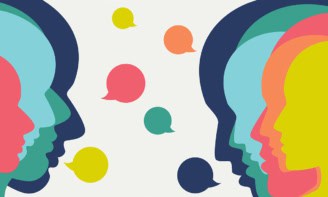
By Hamish Johnston in Beijing
This morning I had a wonderful visit to see some condensed-matter physicists at the Institute of Physics of the Chinese Academy of Sciences (IOP CAS). First I met with theorists Zhong Fang and Hongming Weng and if you know your equations you can see from the above photo that they work on Weyl semi-metals. Fang is deputy director of the institute and is head of a theoretical physics group that includes six faculty members and about 20 postgraduate students. Avid readers might recall that Fang and Weng were named in the Physics World Top 10 Breakthroughs of 2015 for their work on Weyl fermions.

Ling Lu, who was part of a group at MIT that was also cited in our top 10 for work on Weyl fermions, has since moved to the IOP CAS. Lu is pictured above with a computer simulation of a new material that is invisible to microwaves. The material is lightweight and sturdy and in principle could be used to make aeroplane wings — which could lead to military aircraft that are much more difficult to detect using radar. His team has already built and tested a prototype of the material made out of plastic and copper.

There is nothing I like more than touring a condensed-matter physics lab and Tian Qian’s lab did not disappoint. Qian uses angle-resolved photoemission spectroscopy (ARPES) to study the electronic properties of materials by shining a light on the material and capturing the electrons that are emitted. That giant bell-shaped object covered in aluminium foil in the above photo is his electron energy analyser. Qian studies iron-based superconductors in Beijing. He also uses a synchrotron facility to study Weyl semi-metals with ARPES.



